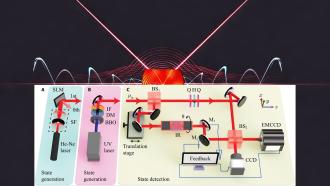
This article is a tribute to Phillip Anderson, who passed away on March 29, 2020. Besides his pioneering works in condensed-matter physics, he also wrote extensively on the theme of reductionism and multiscale physics.
Some researchers believe that there could be a single equation that can explain everything! They call this the futuristic theory, the Theory of Everything (TOE). It stems from the concept called reductionism, which means breaking up a system into its smallest components, and then explaining the system based on the properties of these components. Reductionism is one of the foundations of modern physics, chemistry, and biology.
In the reductionist approach, we focus on elementary particles and forces among them (called fundamental forces). The physical laws in this domain are called fundamental laws. Nobel laureate Philip Anderson was critical of the reductionist approach. In a famous article, More is Different, he argued that “...the reductionist hypothesis does not by any means imply a ‘constructionist’ one: The ability to reduce everything to simple fundamental laws does not imply the ability to start from those laws and reconstruct the universe”. Fundamental forces and interactions may be at work at the microscopic level. Still, it is almost impossible to construct worldly phenomena, such as the human body, starting from elementary particles and using just the fundamental laws.
In the reductionist framework, we can explain many things, for example, the trajectories of a single electron in magnetic and electric fields. However, it is impossible to work out the paths of all the molecules in a room, even using the best available computers. Researchers developed additional tools to model the properties of large systems with many components. One such example is the gas laws of thermodynamics that relate pressure, temperature, and volume of a gas. Kolmogorov’s theory of turbulence is another example. Such laws are referred to as macroscopic laws. They describe macroscopic forces such as pressure, surface tension and friction, which are the forces derived from fundamental forces.
Fundamental forces exhibit specific properties at a microscopic level that are not obeyed in the macroscopic world. One such is symmetry under time reversal. An egg drops to the floor and breaks. If we make a movie and play it backwards, we would know that it is played in reverse because an egg cannot come together from pieces. At the atomic level, a physicist would not find anything that violates the fundamental laws. Our experience is that time cannot be reversed, and fundamental laws at the microscopic level cannot explain this.
Time reversal symmetry and the arrow of time
If fundamental laws cannot explain why broken pieces of objects do not spontaneously come together to form the object, or why we age but not grow younger, what does? What determines the arrow of time? To explain the arrow of time, we need to go beyond fundamental laws to explain real-world phenomena. Though fundamental laws work all the way, extra inputs are required to solve complex phenomena around us.
One of the several ways researchers use to explain the arrow of time is that disorder in a system increases with time. They describe this phenomenon using the second law of thermodynamics. They measure the disorder with a quantity called entropy. Once we open the valve of a cylinder filled with compressed oxygen kept in a room, the compressed oxygen quickly mixes with the air in the room. We never see the oxygen scattered in the room go back to the cylinder and get compressed. The state of disorder (oxygen spread in the room) comes after the state of order (oxygen confined to the cylinder).

Figure 1: (a) Chaotic motion of a planet (P) going around two stars (S). (b) The movement of a shell from a cannon.
The trajectory of a planet in the proximity of a two-star system depends crucially on its initial position with respect to them. That is, a slight shift in the position of the green dot of Figure 1(a) will lead to a very different trajectory. Thus, the trajectory of the planet is not reversible in time due to sensitivity to the initial condition. Researchers use this idea to explain the arrow of time.
An interesting question to think of is whether a shell fired from a cannon (Fig 1(b)) in a vacuum goes back to the muzzle if the motion is reversed. In real life, it is quite improbable for the shell to get inside the muzzle because it requires extreme precision during the reversal of the ball. The forward motion and backward motion being asymmetric implies that in real life, large structures may be constrained to move in the forward direction in time. The trajectory of the planet and the cannon-shell system have multiple scales.

Figure 2: Forward motion in a vacuum (AB) and forward (AB’) and backward motion (B’A’) of the shell in an atmosphere.
If we were to fire a ball from a cannon in a real atmosphere, instead of vacuum, we would observe a force resisting the forward motion, which we call friction. The ball will travel a shorter distance in the real atmosphere than in a vacuum (trajectory AB), both for forward (trajectory AB’) and reverse (trajectory B’A’) directions. The motion is not symmetric under time reversal.
Friction, an example of derived force, breaks the time-reversal symmetry here and hence can determine the arrow of time. The friction force acting on the ball transfers the large scale kinetic energy of the ball to the molecules of the air. Thus, friction enables multi-scale energy transfer. Since friction is present almost everywhere, it could be a dominant mechanism for determining the arrow of time.
Fundamental forces are symmetric under time reversal. But macroscopic phenomena with multiscale interactions have a definite arrow of time.
This article is a part of the series “Importance of multiscale description in science” by Prof. Mahendra Verma, Department of Physics, Indian Institute of Technology, Kanpur.






